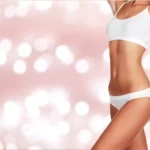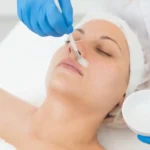
Restylane is one of the most popular dermal fillers used to treat the chin area. Restylane is often used by medical professionals around the world because it offers a wide variety of products. Restylane fillers for chin augmentation often used include Restylane Lyft and Restylane Volume. These two specialized fillers are highly elastic and are ideal to treat the tip of the chin.
Why opting for Restylane when looking to augment your chin?
The chin is often an area of aesthetic concern for the aging population. The effects of age on the jawline and chin are readily apparent, with the loss of bone density resulting in a reduction of mandibular height and length. The two main issues often seen in this area are dimpling or creasing caused by the movement of the mentalis muscle, as well as a reduction of chin volume secondary to hereditary bone definition (chin retrusion). Both of these issues can be addressed with filler treatment, which is able to provide improvement to the anterior, transverse and vertical dimensions of the chin.
Consider using Restylane for other areas of your face too
It is imperative to note that when treating the chin, as with other facial elements, it is important to consider it as just one part of the whole face, without viewing it in isolation. In aging patients, additional rejuvenation of other lower facial features like the lips, pre-jowls, and jawline may provide better overall treatment outcomes overall. This is also easily achieved with other Restylane specialized products.
Soft tissue augmentation techniques are especially suitable for patients with thin skin over a well-defined and prominent mandible, as these characteristics suggest that there is adequate support and definition provided by the underlying bony structure. Treatment of the chin requires a filler with very high elasticity in order to provide the necessary lift to produce the desired chin projection. Fillers that fit the bill include Restylane Lyft and Restylane Volume (known previously as Emervel Volume).
Restylane for the chin injections treatment
Generally, these highly elastic fillers are used in the tip of the chin. There, the product of choice is injected into the subcutis plane with a 30G 1” needle, utilizing a fanning technique. Vigorous massage is then applied to avoid the formation of lumps. To minimize bruising, the “push-ahead” technique can be used, in which the filler is injected as the needle is advanced to move blood vessels out of the way. Other injection techniques suitable for treating the chin include serial puncture and linear threading.
Previously, the chin was typically enhanced through surgical approaches, such as chin implants or genioplasty. Now, Restylane’s high-viscosity dermal fillers are emerging as a viable alternative treatment, and are becoming increasingly popular due to their many advantages. This form of treatment is minimally invasive, with results that can be adjusted or reversed in an uncomplicated manner. This trait is particularly useful, as the jawbone undergoes changes in shape with time. In today’s day and age, hyaluronic acid fillers like Restylane are an indispensable part of the aesthetic practitioner’s armamentarium when it comes to chin augmentation.
Aesthetic medicine products are developed and regulated to meet stringent safety and efficacy standards. They are typically administered by trained healthcare professionals such as dermatologists, plastic surgeons, and specialized nurses in clinical settings. These products aim to provide effective solutions for cosmetic enhancement, skin rejuvenation, and overall aesthetic improvement, contributing to both physical appearance and self-confidence.
Key categories of aesthetic medicine products include:
-
Injectables: This category includes products such as dermal fillers, botulinum toxins (e.g., Botox), and collagen stimulators. These injectables are used to smooth wrinkles, add volume, and improve facial contours.
-
Skin Rejuvenation Treatments: Products like chemical peels, microdermabrasion systems, and laser devices are used to improve skin texture, reduce pigmentation irregularities, and enhance overall skin tone.
-
Skincare Products: These include medical-grade cleansers, moisturizers, serums, and topical treatments containing active ingredients like retinoids, antioxidants, and growth factors. They are formulated to address specific skin concerns such as acne, aging, and hyperpigmentation.
-
Hair Restoration Products: Medical treatments and products designed to promote hair growth and treat conditions such as male and female pattern baldness.
-
Body Contouring and Fat Reduction: Devices and products used for non-surgical body sculpting, such as cryolipolysis (cool sculpting) devices and injectable lipolytics.
-
Cosmeceuticals: High-performance skincare products that bridge the gap between cosmetics and pharmaceuticals, often containing potent ingredients with proven clinical benefits.
-
Wound Care and Scar Management: Products like silicone sheets, gels, and advanced wound dressings used to improve healing and reduce the appearance of scars.





